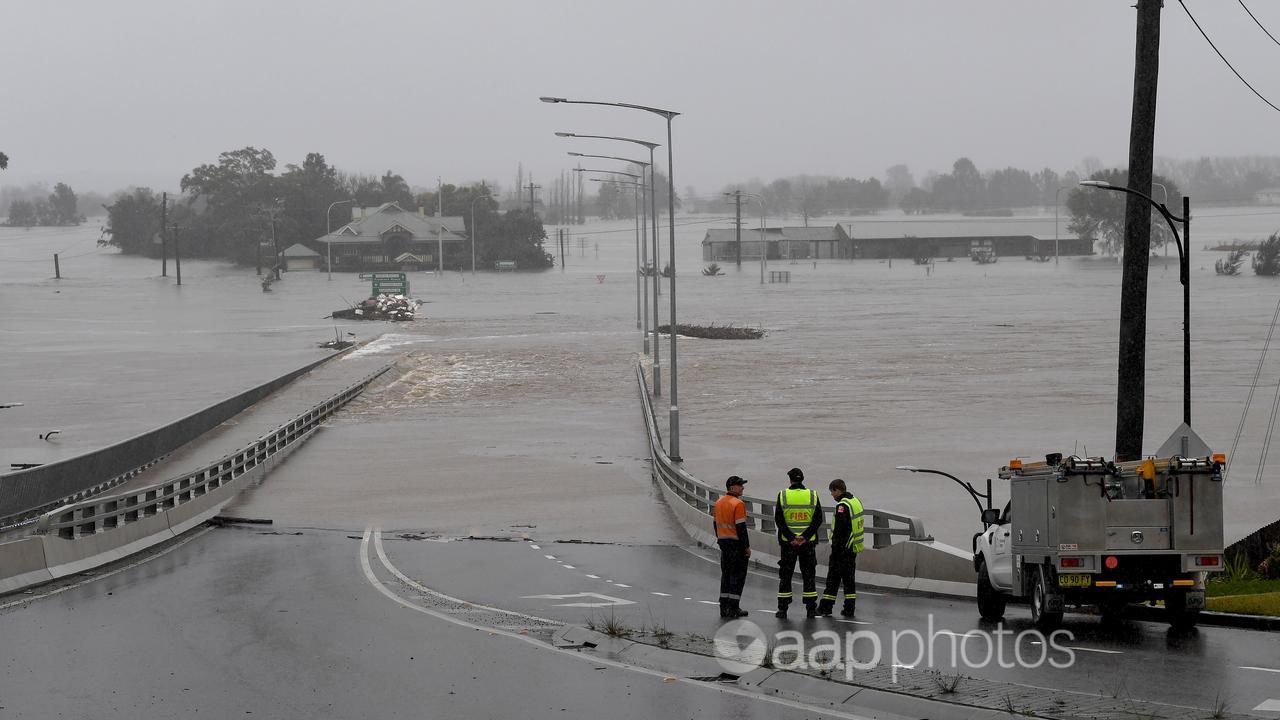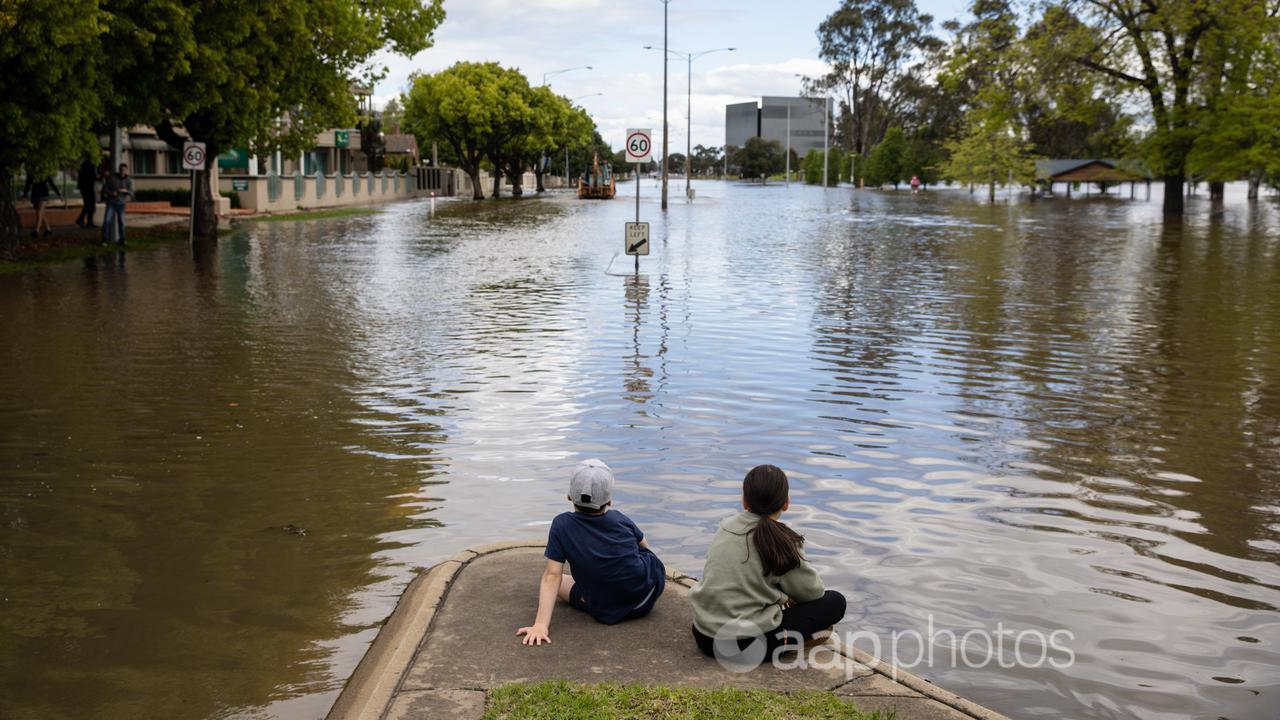Recent heavy rain and flooding has devastated parts of the country, resulting in three deaths, evacuations and destruction of property.
However, a Facebook post claims there is no evidence floods and droughts are getting worse.
The claim is made in a Facebook post (archived here) with the text from a blog post published on a climate change discussion website.
Other versions of the claim have been shared here, here, here and here.
“There is nothing unusual about today’s floods, fires, droughts, homelessness and hunger – they have always been part of the human story. But satellite technology allows us to track them better and our world-wide media revels in disaster-reporting, bringing tearfully tragic scenes into every living room, every night,” the post says.
“Population growth means that more people are affected by weather extremes, but there is no evidence that floods and droughts are getting worse.”

However, experts told AAP FactCheck that there is evidence to show recent floods and droughts have been more frequent and intense, both in Australia and overseas.
Dr Conrad Wasko, an expert on floods and hydrology at the University of Melbourne, said there is evidence of large floods increasing while smaller floods are decreasing.
“This is likely due to changing rainfall weather types and drier soils,” he said of the decrease in smaller floods.
He added: “‘Large’ floods though, have been shown historically, and are projected into the future by climate models, to increase.”
Professor Rory Nathan, also from the University of Melbourne, described it as a “double whammy of climate adversity“.
Writing in The Age earlier this month, he said: “Under a warming climate, not only will our big floods get bigger, but our small floods will get smaller. Larger floods mean that the threats to life and property will increase over time, but smaller floods will reduce the essential inflows to dams that our water supplies rely on.”
Dr Wasko pointed to two studies that show large floods have been increasing.
A 2016 study, which examined the frequency of flooding along Australia’s east coast from 1860 to 2012, found “a statistically significant, increasing trend in the frequency of major floods since the late 19th century, which contributes to a 50 per cent increase in frequency” (page 2).
The researchers determined that the increase in flood frequency was caused by land use change, anthropogenic climate change and natural climate variability (page 8), but that more research was needed to clarify the level of influence each of these factors had.
A more recent study, co-authored by Dr Wasko, looked at streamflow data for 2,776 gauge stations located around the world to investigate flood magnitude in response to extreme rainfall events.
The study found the magnitude of frequent floods – those that occur on average once per year – is generally decreasing, but the magnitude of rarer – and more extreme – floods has been increasing.
“We suggest this is because, for these rarer events, the increase in rainfall outweighs the decrease in soil moisture. Our results point to a worst of both world’s scenario where small floods, responsible for filling our water supplies, are decreasing, while the large flood events which pose a risk to life and infrastructure, are increasing,” the study concluded (page 1).
Dr Kim Reid, a research fellow at Monash University‘s school of earth, atmosphere and environment, told AAP FactCheck there is evidence northwest Australia has experienced an increase in heavy rainfall due to climate change.
“The exact cause is uncertain but is potentially due to increased rainfall from the monsoon due to a warmer atmosphere holding more moisture,” she said.
The 2020 State of the Climate Report from the Bureau of Meteorology also states that there has been an increase in the intensity of heavy rainfall events in Australia, particularly in the north (page 8).

Dr Ailie Gallant, an associate professor also at Monash University, explained that Australia has always been affected by droughts, many of which can be related to El Niño and La Niña cycles and influences from the Indian Ocean.
“The poster claims there is ‘no evidence that floods and droughts are getting worse’. It is true that Australia does have strong influences from natural climate variability, however, Australia is also experiencing the effects of climate change on top of that variability,” she said in an email.
Dr Gallant said there are strong drought trends in some parts of the country, particularly southwest Western Australia which has experienced a drying trend for more than 40 years.
“This trend has been directly linked to human-induced climate change. Here, it is clear that climate change is dominating over natural variability.”
Dr Reid also noted that southern Australia has seen an increase in droughts, but said “there is too much uncertainty to conclude if droughts are increasing or decreasing in eastern and central Australia.”
A 2017 paper, that reconstructed 800 years of seasonal rainfall patterns across Australia, found “major droughts of the late 20th and early 21st centuries in southern Australia are likely without precedent over the past 400 years.”
Dr Benjamin Cook, an adjunct research scientist in biology and paleo environment at Columbia University, told AAP FactCheck via email: “There is plenty of evidence that climate change is increasing the severity of droughts in many (though not all) regions.”
Dr Cook said more severe droughts have also been observed in regions throughout western North America, the Mediterranean, Central America, Chile-Argentina, and Southern Africa.
The Verdict
The claim that there is no evidence to show floods and droughts have been getting worse is false. Several experts told AAP FactCheck there is evidence to show both have been more frequent or intense in recent decades.
Experts said climate change has had an impact. However, other factors such as natural climate variability, El Niño and La Niña cycles and the Indian Ocean have also contributed.
False – The claim is inaccurate.
* AAP FactCheck is an accredited member of the International Fact-Checking Network. To keep up with our latest fact checks, follow us on Facebook, Twitter and Instagram.
All information, text and images included on the AAP Websites is for personal use only and may not be re-written, copied, re-sold or re-distributed, framed, linked, shared onto social media or otherwise used whether for compensation of any kind or not, unless you have the prior written permission of AAP. For more information, please refer to our standard terms and conditions.


















